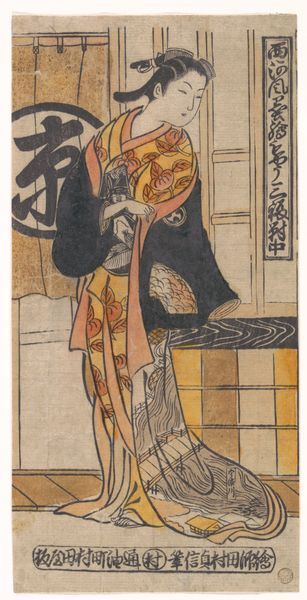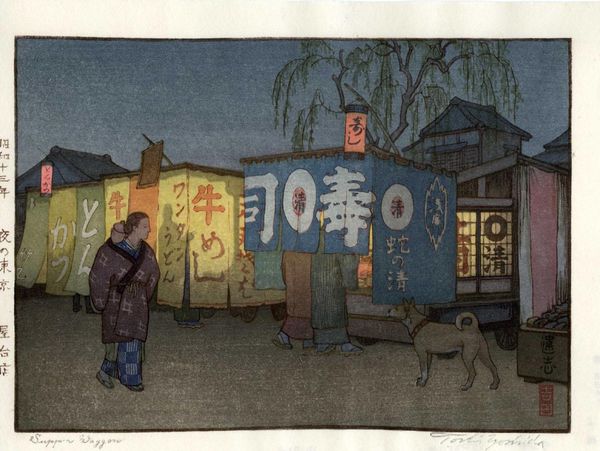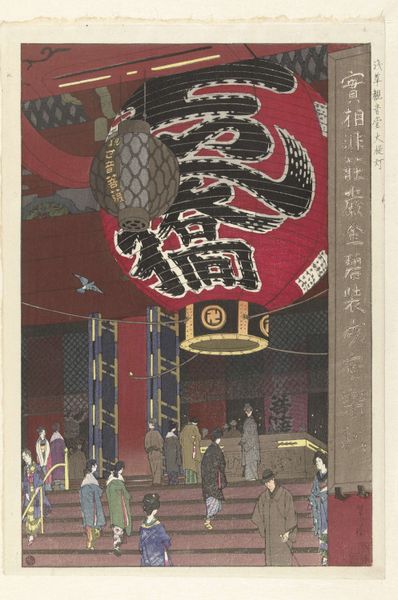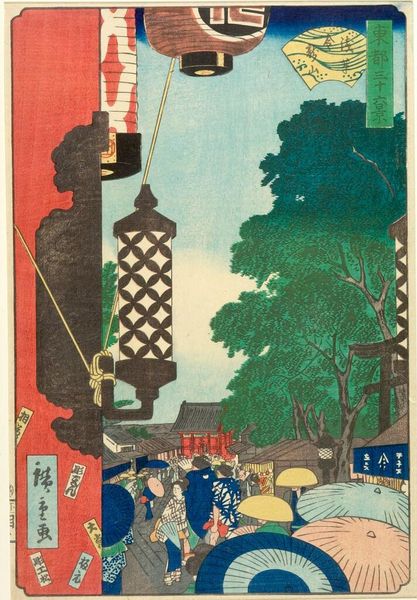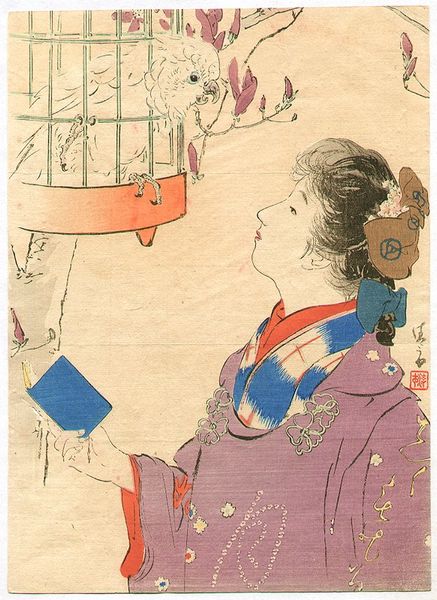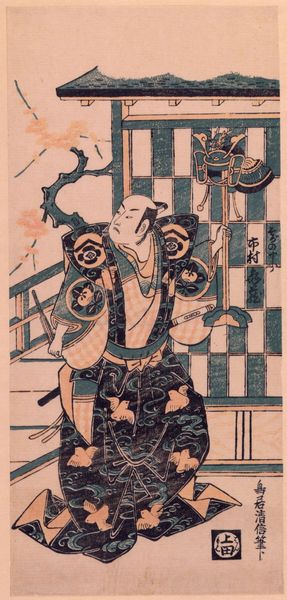
print, woodcut
# print
#
asian-art
#
landscape
#
ukiyo-e
#
woodcut
#
naive art
#
watercolour illustration
Copyright: Toshi Yoshida,Fair Use
Curator: Let’s turn our attention to “Ishiyama Temple,” a woodcut print. Although undated, it’s an intriguing work by Toshi Yoshida, isn't it? Editor: My first impression? Light battling darkness, kind of like the world holding its breath at twilight. I'm drawn to the dizzying effect of the hanging lanterns—it feels like they could just float away. Curator: That tension you describe between light and darkness seems spot-on. Yoshida, as an artist working within the *shin-hanga* movement, blends traditional *ukiyo-e* techniques with Western artistic influences. Notice how the composition frames the scene to bring the interior and exterior worlds together. And how do you see the people here, rendered at the center? Editor: I notice that the crowd provides a subtle reminder of a vibrant energy flowing through this seemingly quiet interior. I imagine hushed conversations mingling with the scent of incense—ordinary moments imbued with the weight of centuries. Also, do you see how the artist allows some colors to be 'imperfect?' It reminds me how tradition is made of intentional or unintentional marks passed down from each practitioner and the natural materials available for use. Curator: That's insightful! We should remember that Ishiyama Temple is closely associated with Murasaki Shikibu, author of *The Tale of Genji.* This detail alone highlights the space of the temple, especially to women traveling and participating in pilgrimages during the Edo period. Yoshida is situating this image for a predominantly male, Western gaze seeking to understand and possess the aura of Japanese culture. Editor: Do you think that these works provided insight into what women may have felt and thought during that time, in the ways that contemporary female artists address themes that shed light on history? Curator: Yoshida's representation is part of a broader phenomenon of how women and culture have been fetishized in Western consciousness through an orientalist lens. But the power of art lies in its capacity to subvert and provide commentary. This leads to productive discourses concerning identity, gender, and representation—ones which invite revisionist considerations in subsequent scholarship and art making. Editor: Looking at "Ishiyama Temple" has me dreaming of the stories whispered within those walls—all filtered, of course, through my very own lens, for better or worse. It all blends together eventually! Curator: A reminder that meaning isn't fixed, but unfolds through these kinds of encounters and considerations! Thank you.
Comments
No comments
Be the first to comment and join the conversation on the ultimate creative platform.


